Weekly Index
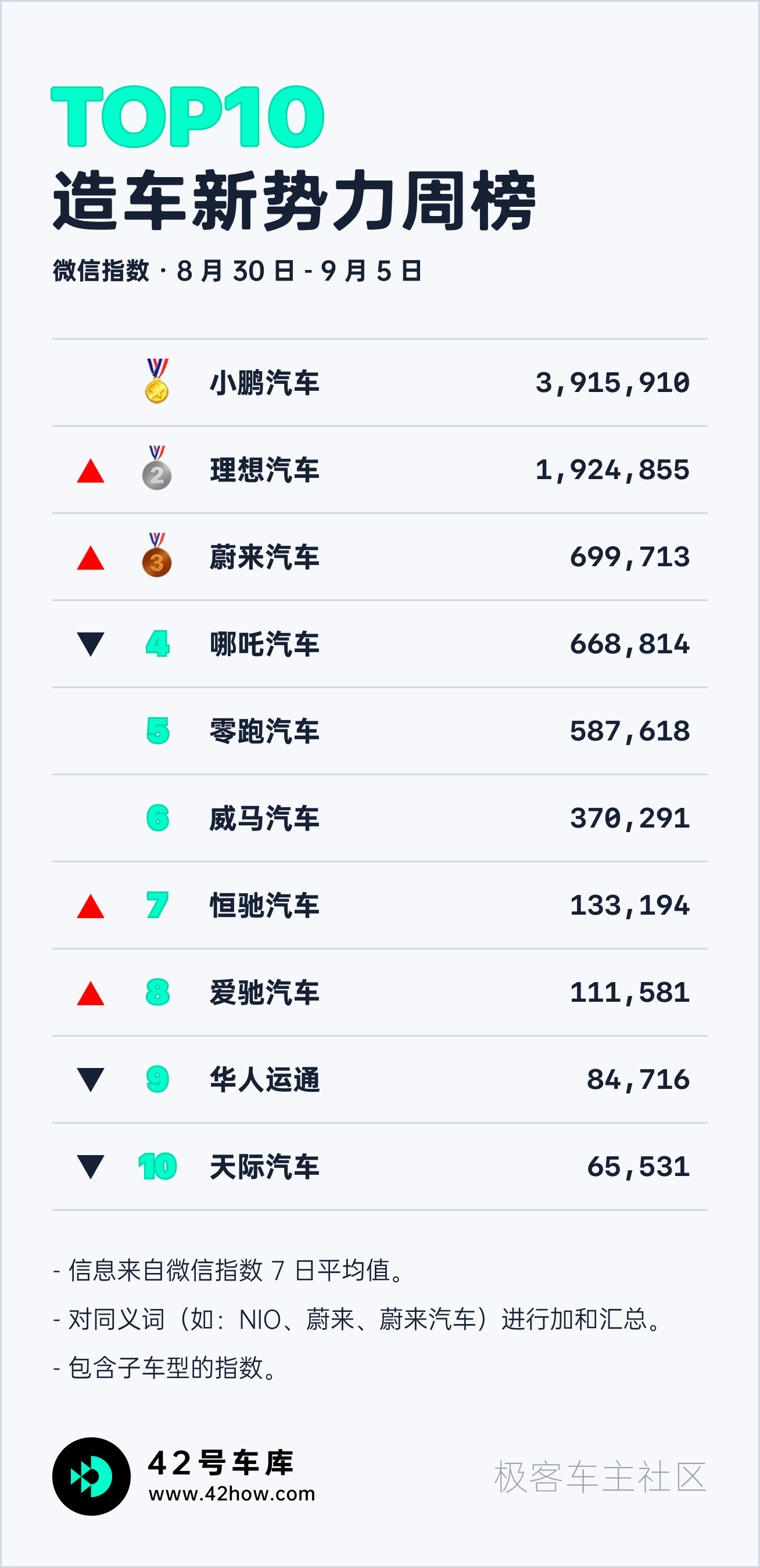
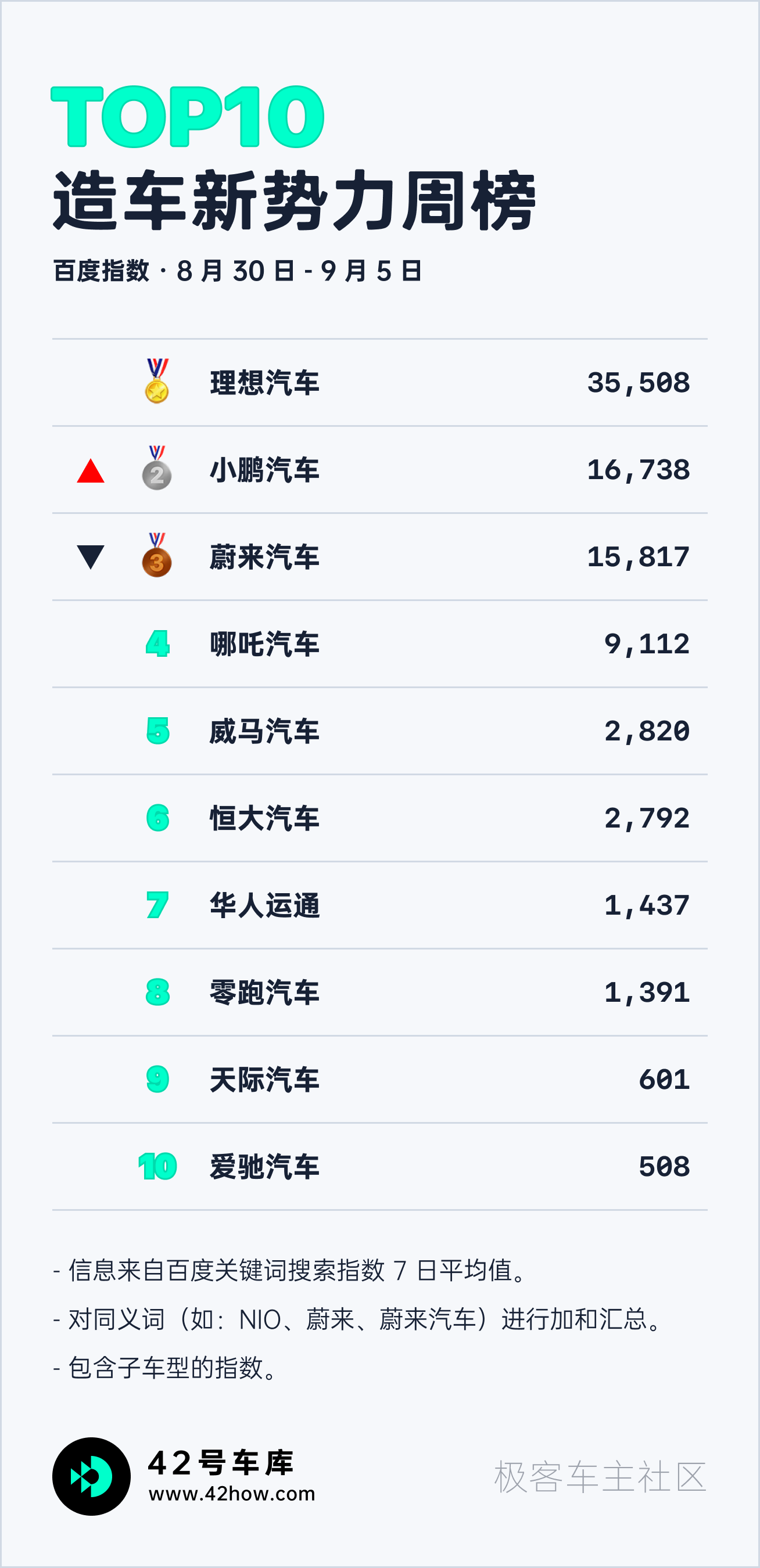
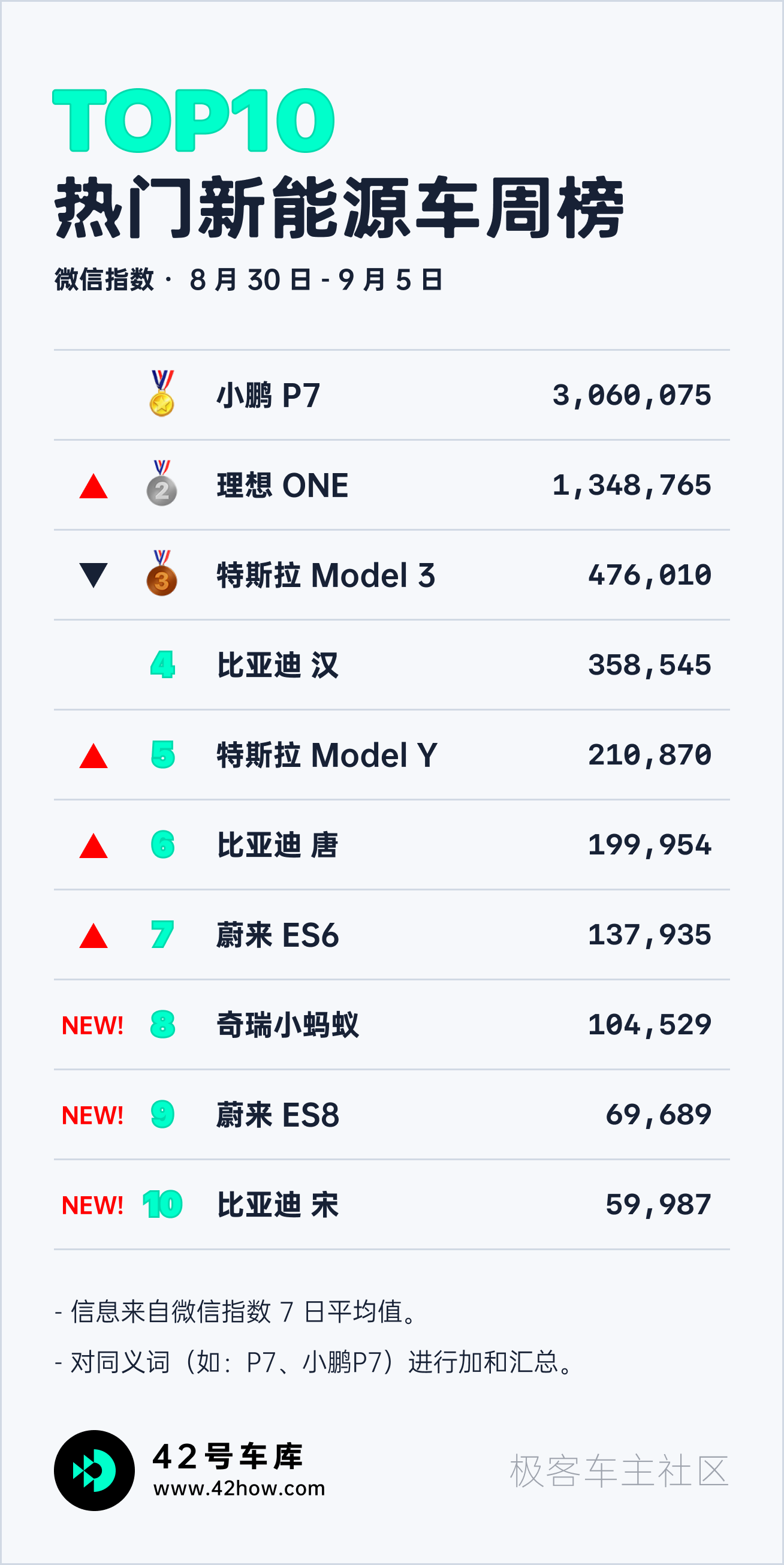
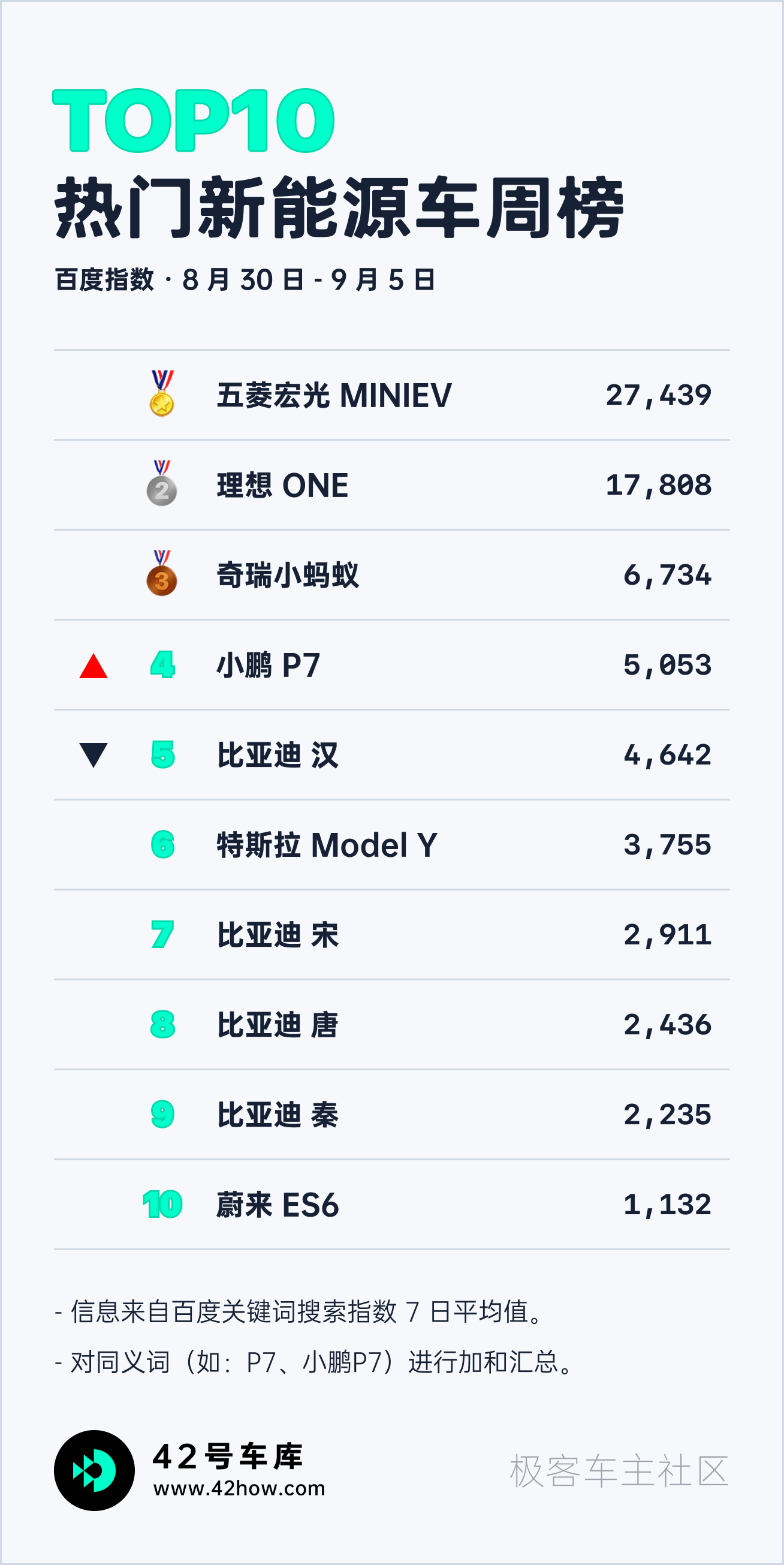
Weekly News
Analysis on Weili Peng’s Sales Performance in August: Counting Down to Breaking 10,000
On the first day of September, the top 3 new forces in the automotive industry updated last month’s delivery performance as usual. In August, Li Auto once again ranked first with 9,433 units sold, followed by XPeng with 7,214 units and NIO, which achieved a relatively unexpected number of 5,880 units.
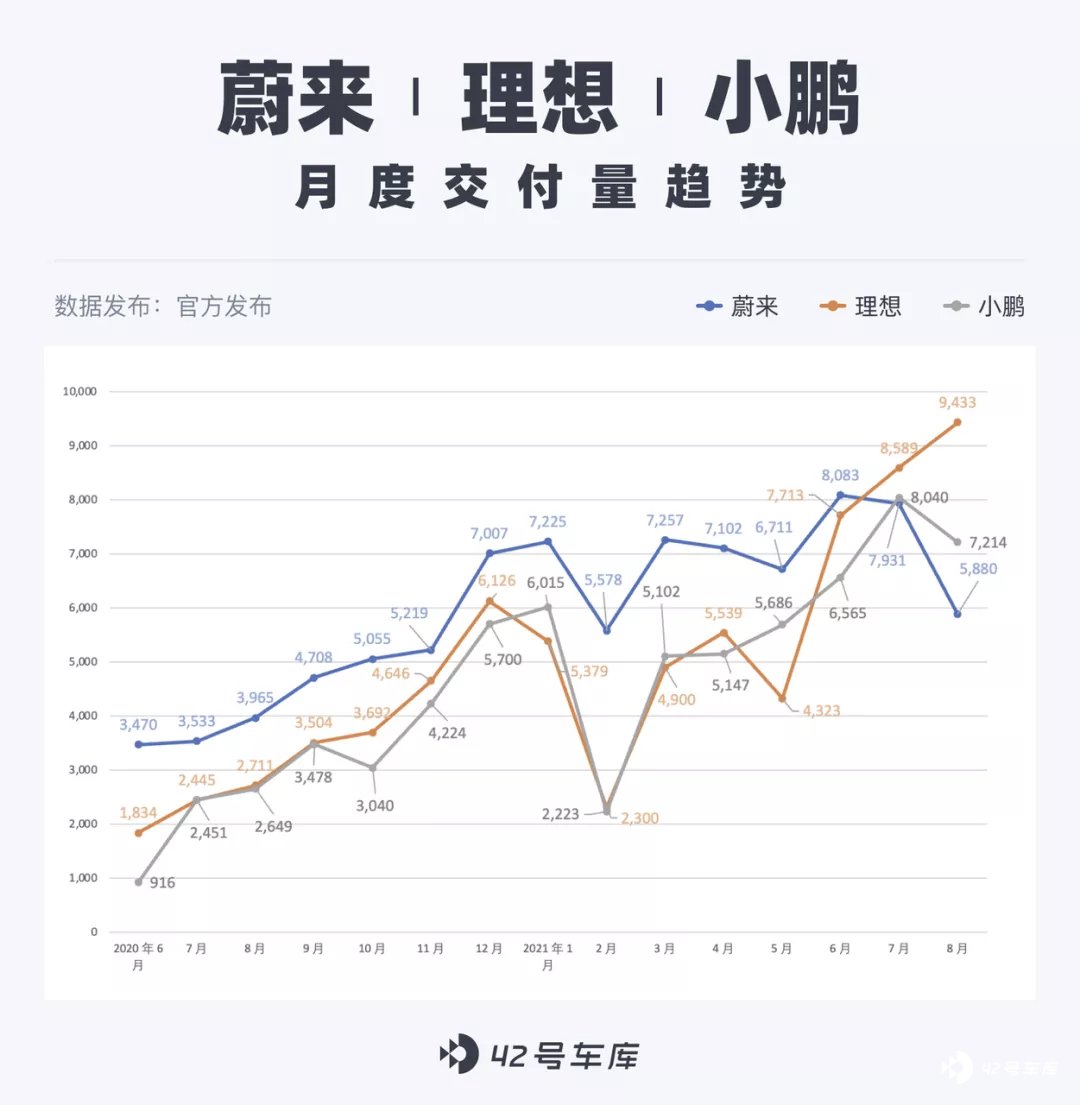
Quick review:
The growth of Li Auto’s August sales obviously came from the 2021 Li ONE model. The new model’s orders had begun to soar rapidly since its release, and the number of orders exceeded 10,000 in June alone. The sales growth after the official delivery of the new car is also very significant. Li Auto’s official forecast is that the delivery volume in September is expected to exceed 10,000 units.
The delivery data of XPeng’s P7 in August remained basically the same as that in June, and the decrease in month-on-month delivery mainly came from the decrease in the delivery of G3. The main reason for this phenomenon was the launch of the G3i model in July. It was reasonable that the delivery of the old model decreased during the period from the launch of the new model to the delivery. XPeng said that large-scale delivery of G3i will begin soon, and the sales in Q4 are expected to reach 15,000 units in a single month.
The sales decline of NIO in August mainly reflected in ES6/EC6. For the obvious month-on-month decline this month, NIO also explained that the main reason was the impact of the epidemic in Nanjing and Malaysia, which had limited the production of vehicles due to the shortage of supplier parts.
4 Models of Mercedes EQ Electric Vehicle Released in Succession
EQE, EQS AMG 53, EQG concept car, and EQS Maybach SUV concept car all made their appearance.
Among them, the EQE 350 model, closest to us, has the following core parameters:1. The size of the car is 4,946 * 1,961 * 1,512 mm and the wheelbase is 3,120 mm. It is based on the Mercedes EVA 2 pure electric platform and will be launched in 2022. The domestic market will be produced by Beijing Benz.
-
Equipped with an 811 three-element lithium battery pack, the battery capacity is 90 kWh, and the WLTP range is 545-660 km.
-
The maximum charging power is 170 kW, and the fastest replenishment can be achieved in 15 minutes with a capacity of 35.55 kWh, which can supplement the WLTP range by 250 km.
-
The EQE 350 rear axle is equipped with a permanent magnet synchronous motor with a maximum power of 215 kW. The maximum power of high-performance models of future EQE is 500 kW.
-
Equipped with a rear axle steering system, the angle includes 4.5° and 10°, the latter can shorten the turning diameter to 10.7 m, and the frequency of torque adjustment of the motor can reach 10,000 times per minute, achieving extremely precise torque distribution.
Quick Review:
Compared with the current long wheelbase E-class sedan, the wheelbase of EQE has increased by 41 mm while the car length has been shortened by 132 mm, which means that the standard wheelbase of future EQE is a long wheelbase, thanks to the benefits brought by the pure electric platform which provides more space. Rear axle steering can help drivers further reduce the feeling of driving a medium-to-large-sized car and make the handling experience more flexible.
From the fact that Mercedes simultaneously released the product plan of four pure electric models at a press conference, it can be seen that Mercedes has made a determined shift towards electrification. Previously, in Mercedes’ 10-year electrification plan, it was stated that Mercedes will occupy a pure electric product in every subdivision market because Mercedes originally had an extremely extensive product chain of fuel-powered cars. Currently, major traditional car companies are rapidly transforming and joining the electric vehicle battle. Whether traditional car companies can break the existing market pattern when 2030 arrives remains to be seen.
The pure electric smart concept car has officially been unveiled.# Electric Smart Concept Car Unveiled
The electric Smart concept car has been released, with the dimensions of 4,2901,9101,698 mm and a wheelbase of 2,750 mm. The car is built on the small car branch platform of the Geely SEA Haohan architecture, and the electronic architecture of the car supports OTA updates. Furthermore, 75% of the car’s ECU also supports OTA upgrades.
Quick Review:
In September last year, Geely announced that it would form a global joint venture with Mercedes-Benz to establish the smart brand, called “Smart Automobile Co. Ltd.” The new generation of electric Smart will be designed by Mercedes-Benz’s global design department, and manufactured by Geely’s global R&D center. Power-wise, the new car may be equipped with a rear-mounted electric motor with a maximum power output of 200 kW and a battery capacity exceeding 70 kWh, with an NEDC range of over 500 km. The car’s price is expected to be between 200,000 and 300,000 yuan, and will be produced at Geely’s Xi’an factory in the future.
At present, Chinese consumers can choose from SUVs such as the Volkswagen ID.4, Polestar 2, and Ford Mustang Mach-E at a similar price range. The new Smart car is still in the concept stage, and it remains to be seen how it will differentiate itself from competitors in the segment when it comes to market.
GAC Aion to Carry Out Mixed Ownership Reform and Introduce Strategic Investors
On the evening of August 30th, the GAC Group released the “Notice on the Intended Mixed Ownership Reform and Introduction of Strategic Investors of a Wholly-owned Subsidiary”. Through the restructuring and integration of new energy vehicle R&D capabilities and businesses, as well as assets, the GAC Group intends to push forward the mixed ownership reform of GAC Aion, capitalizing on the advantages brought by a capital market, and increase its equity by introducing strategic investors.
In the future, GAC Aion will actively seek to list at an appropriate time, fully utilizing the funding advantages of capital markets.

Quick Review:
GAC Aion occupies an important position in the mainstream consumer market of 100,000-200,000 yuan, with a compound annual growth rate of 128.9%. By now, its cumulative sales have exceeded 180,000 vehicles.
In 2021, GAC Aion is expected to sell over 100,000 vehicles, with more than 16,000 orders received in July alone. Currently, its factory capacity utilization rate has topped 140%, with demand far outstripping supply. GAC Aion has already launched a 200,000 vehicles/year capacity expansion project, planning to invest 500 million yuan, and complete construction in early 2022, laying the foundation for production capacity to meet market demand and achieve higher sales targets.NIO has released its version 3.0 system and new naming system. The NIO 3.0 system comes with a new user interface, which introduces new features such as team travel, tides, karaoke, and also improves the experiences of NOMI and NIO Pilot. NIO has introduced new names for its vehicle system, with the NT1 platform named Aspen and the NT2 platform named Banyan, also referred to as the A system and the B system respectively. The different names are due to different performance on different platforms, and using the same name will obscure the differences. However, both platforms will continue to be iterated and improved.
Lotus Technology has recently been funded by NIO Capital, with the latter exploring global brand expansion and industry collaboration space, advocating super high-end pure electric smart subdivision development to offer ultimate quality and experience to high-end market customers.
Note: HTML tags are reserved.The speed of the automotive industry’s transition to the electric era has far exceeded expectations. In June of this year, pure electric vehicle sales in the European market accounted for 10.7% of overall car sales, and first-tier and second-tier cities in China also showed strong growth rates.
However, there are currently only a few players in the ultra-luxury smart electric vehicle market, making it a completely untapped market for traditional automakers. Since being acquired by Geely, Lotus has not only released the world’s most powerful and lightweight pure electric hypercar, the Evija, in 2019, but also recently unveiled the swan song of its internal combustion engine-powered cars, the Emira. As of August 27th, pre-orders for this Lotus had reached 7,999, giving the new generation Lotus a great start.
3D digital twinning, racetrack-level intelligent driving, and ultra-high-end pure electric intelligence – this is the brand new direction proposed by this globally renowned 73-year-old sports car brand and F1 famous manufacturer.
At this press conference, Lotus unveiled its independently developed EPA edge evolutionary architecture for ultra-high-end pure electric intelligent vehicles, which is the first 800V three-electric system platform in China. In terms of intelligent driving, Lotus proposed the concept of “racetrack-level intelligent driving,” and through the technology route of fusion of laser radar + ultra-high-definition camera + 4D millimeter-wave radar full-view perception, it also ensures passenger safety.
“Racing-level intelligent driving, entering the intelligent driving race is the direction that Lotus technology has firmly set for the next ten years, and it is also the technology path that sets Lotus intelligent driving apart from any other brand,” said Lotus Group CEO Feng Qingfeng at the press conference.
This article is a translation by ChatGPT of a Chinese report from 42HOW. If you have any questions about it, please email bd@42how.com.
